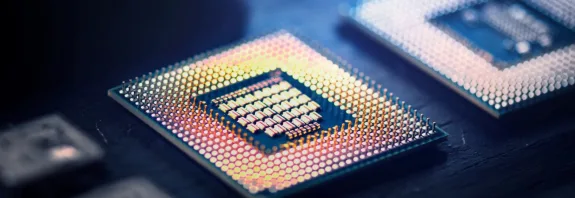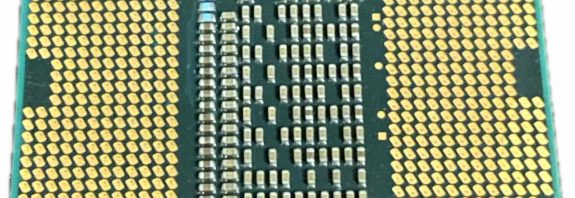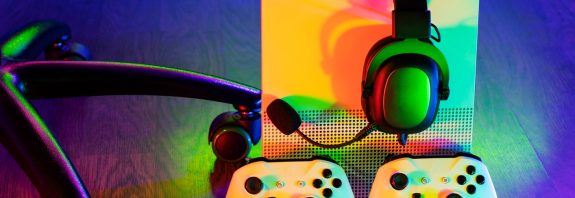BIOS for AMD Ryzen Processors: Key Configuration Settings

Key Features and Settings for Configuring BIOS with AMD Ryzen Processor
BIOS for AMD Ryzen Processors. Configuring the BIOS (or UEFI) is a critical step to ensure optimal performance for computers with AMD Ryzen processors. Proper configuration unlocks the full potential of your CPU, memory, and other system components while ensuring stability and efficiency. This article explores the key features of BIOS setup for AMD Ryzen platforms, essential settings to focus on, and recommendations for optimal performance.
Why is BIOS Configuration Important for AMD Ryzen?
AMD Ryzen processors, from the first generation (Zen) to the latest Zen 5, have unique features that impact system performance. BIOS provides access to settings that allow you to:
- Optimize CPU and Memory Frequencies: Ryzen is highly sensitive to memory speed and timings, which significantly affect overall performance.
- Enable Overclocking: Technologies like Precision Boost Overdrive (PBO) boost performance with minimal risk.
- Ensure Stability: Proper voltage, frequency, and cooling settings prevent overheating and crashes.
- Support Modern Features: Activating technologies like Resizable BAR (Smart Access Memory) can enhance gaming performance.
How to Enter the BIOS?
To begin configuring, you need to access the BIOS:
- Turn on or restart your computer.
- During boot, press the appropriate key (usually Del, F2, F10, or Esc). The exact key depends on the motherboard manufacturer (ASUS, MSI, Gigabyte, ASRock, etc.).
- If the system boots too quickly, use Windows’ Advanced Startup:
- Go to Settings → Update & Security → Recovery.
- Click Restart now under Advanced Startup.
- Select Troubleshoot → Advanced Options → UEFI Firmware Settings.
Key BIOS Sections for AMD Ryzen Configuration
Modern BIOS interfaces are user-friendly and typically include these key sections:
- Main/System Information: Displays system details (BIOS version, CPU model, memory capacity, etc.).
- Advanced Settings: Contains options for overclocking, CPU, memory, and chipset configuration.
- OC/Overclocking: Dedicated section for CPU, memory, and component overclocking.
- Boot: Configures device boot order.
- Power Management: Manages power consumption and cooling settings.
- Hardware Monitor: Monitors temperature, voltage, and fan speeds.
Key BIOS Settings for AMD Ryzen
1. BIOS Update
Before adjusting settings, ensure your BIOS is up to date. Manufacturers regularly release updates to:
- Improve compatibility with new Ryzen CPUs.
- Optimize memory performance.
- Fix stability issues.
How to Update BIOS?
- Download the latest BIOS version from the motherboard manufacturer’s website.
- Copy the file to a USB drive.
- Enter the BIOS and use the built-in utility (e.g., ASUS EZ Flash, MSI M-Flash, Gigabyte Q-Flash).
- Follow the instructions and avoid interrupting power during the update.
Note: Updating the BIOS may reset all settings to default.
2. Memory Configuration (XMP/DOCP/EXPO)
Ryzen processors are highly sensitive to memory speed and timings due to the integrated memory controller (IMC). Optimizing memory can significantly boost performance, especially in games and bandwidth-dependent tasks.
Steps to Enable Memory Profile:
- Locate XMP (Extreme Memory Profile, for Intel and AMD), DOCP (Direct Overclock Profile, for ASUS), or EXPO (Extended Profiles for Overclocking, for AM5 platforms) in the BIOS.
- Enable a profile (e.g., XMP Profile 1) to run memory at its rated speed (e.g., 3200 MHz instead of the default 2133 MHz).
- For Ryzen 5000 and newer, memory at 3600–4000 MHz with CL16 or lower timings is recommended.
Tip: If the system is unstable after enabling XMP, manually lower the frequency or slightly increase DRAM voltage (e.g., to 1.35 V).
3. Precision Boost Overdrive (PBO)
Precision Boost Overdrive is an AMD technology that automatically boosts CPU frequencies based on workload, temperature, and cooling capabilities, providing extra performance without complex manual overclocking.
How to Enable PBO?
- In the BIOS, go to the OC or Advanced CPU Settings section.
- Find Precision Boost Overdrive and select a mode:
- Auto: Default mode.
- Enabled: Activates PBO for higher frequencies.
- Advanced: Allows customization of power limits (PPT, TDC, EDC).
- For Ryzen 7000 and 9000 series, use PBO Curve Optimizer to lower voltage for reduced temperatures and improved efficiency.
Warning: PBO increases temperatures and power consumption, so ensure adequate cooling.
4. Resizable BAR (Smart Access Memory)
Smart Access Memory (SAM) allows Ryzen CPUs to access the full memory of a video card, potentially boosting gaming performance by 5–15% (depending on the game and configuration).
How to Enable SAM?
- In the BIOS, find Resizable BAR or Smart Access Memory (usually in the PCIe Subsystem or Advanced Settings section).
- Enable it.
- Ensure you have a compatible video card (AMD Radeon RX 6000/7000 or NVIDIA RTX 30/40) and the latest drivers.
5. Fan and Cooling Configuration
Effective cooling is critical for Ryzen, especially with PBO or manual overclocking. BIOS allows you to configure fan speed curves based on temperature.
Steps:
- Go to the Hardware Monitor or Fan Control section.
- Select fan modes (e.g., Silent, Standard, Turbo) or create a custom curve.
- For Ryzen 7000 and 9000, maintain temperatures below 85°C under load.
Tip: For liquid cooling, ensure the pump runs at a constant speed (e.g., 100%).
6. Power Management Settings
To reduce temperatures and improve energy efficiency:
- C-States: Enable Global C-States to allow the CPU to enter low-power modes during idle, reducing temperatures.
- Cool’n’Quiet: This feature lowers frequencies and voltage during idle. Keep it enabled for daily use.
- Power Plan: In Windows, select High Performance or AMD Ryzen High Performance for maximum performance.
7. Gaming-Specific Settings
For gamers, specific settings can enhance the experience:
- Game Boost: Some motherboards (e.g., MSI) offer Game Boost, which automatically optimizes frequencies for gaming.
- Core Parking: Disable core parking in BIOS or Windows to keep all cores active during gaming.
- X3D Gaming Mode (for Ryzen 7 7800X3D, 7950X3D, etc.): Some BIOS versions allow enabling a mode for 3D V-Cache CPUs to optimize gaming performance.
Common Mistakes and How to Avoid Them
- Incorrect Voltage Settings: Excessive voltage for the CPU or memory can cause overheating and instability. For example, avoid exceeding 1.4 V for DRAM without proper cooling.
- Ignoring BIOS Updates: Outdated BIOS versions may have compatibility issues with new CPUs or memory.
- Inadequate Cooling: Ryzen 7000 and 9000 series can reach high temperatures under load, so use high-quality coolers.
- Mismatched Memory and Controller Frequencies: For Ryzen, the memory controller (FCLK) typically runs at half the DRAM frequency. For example, DDR4-3600 MHz requires an FCLK of 1800 MHz.
Recommendations for Different Scenarios
For Gamers:
- Enable XMP/EXPO for 3600–4000 MHz memory.
- Activate Resizable BAR/SAM.
- Use PBO in Enabled or Advanced mode with Curve Optimizer.
- Configure fans for low temperatures (below 80°C).
For Content Creators:
- Use high-frequency memory with low timings.
- Enable PBO for maximum multi-core performance.
- Increase power limits (PPT) for sustained workloads.
For Everyday Use:
- Leave most settings on Auto.
- Enable XMP for basic memory optimization.
- Activate C-States and Cool’n’Quiet for energy efficiency.
Conclusion
Configuring the BIOS for AMD Ryzen processors is about balancing performance, stability, and efficiency. Key areas include memory optimization, overclocking (PBO), cooling, and enabling modern technologies like Smart Access Memory. Always start with a BIOS update, carefully review settings, and make changes incrementally, testing system stability after each step.
Beginners should use automatic profiles (XMP, PBO, Game Boost) to minimize errors, while advanced users can fine-tune memory timings, voltages, and frequencies for additional performance gains.
Warning: Changing BIOS settings can cause system instability. Always save a backup of your settings and be prepared to reset the BIOS to factory defaults using the Clear CMOS button.
BIOS for AMD Ryzen Processors. We hope this guide helps you optimize your Ryzen-based PC for any task! If you have questions, consult your motherboard’s documentation or enthusiast communities.









